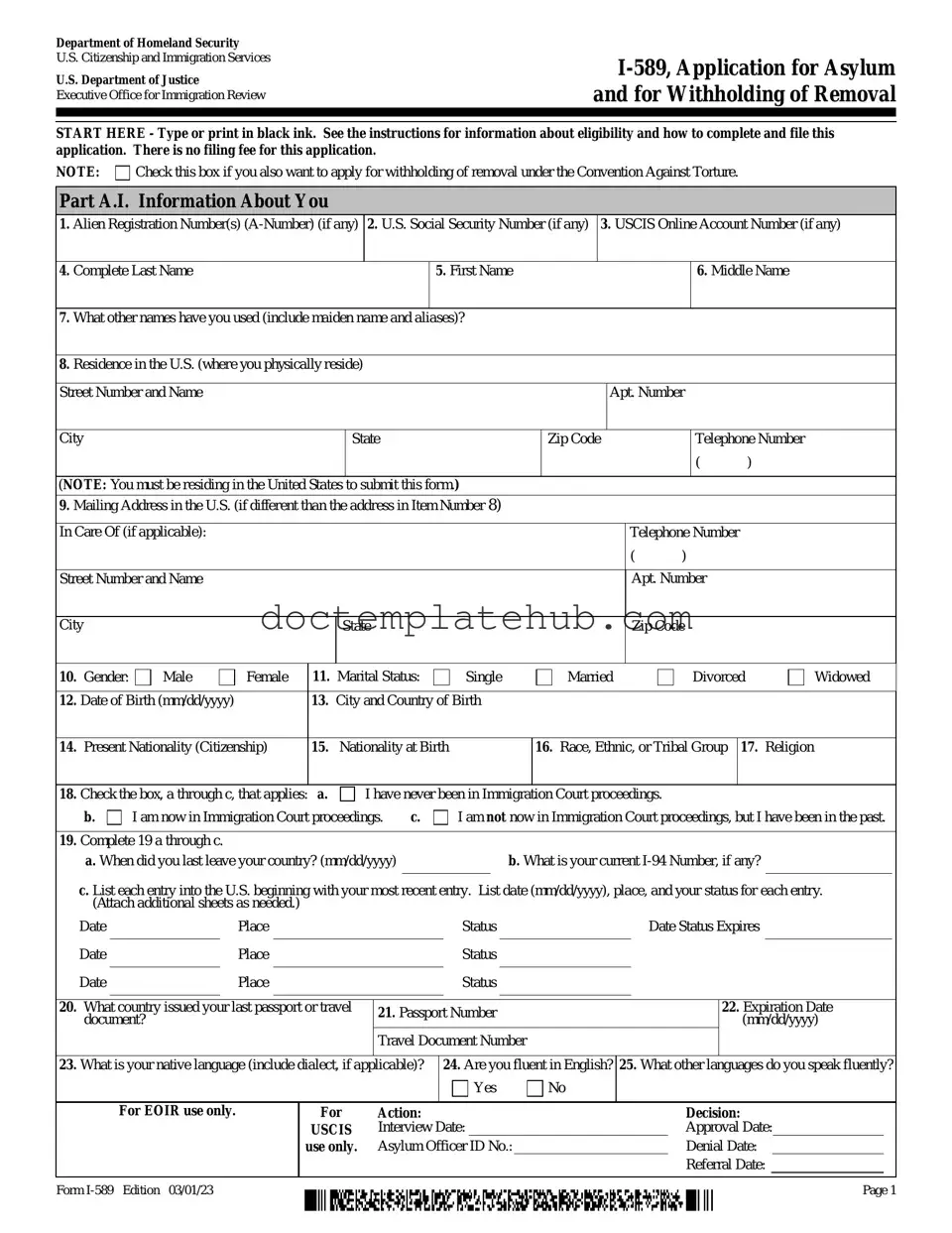What is the USCIS I-589 form?
The USCIS I-589 form is an application for asylum and for withholding of removal. It is designed for individuals who are seeking protection in the United States due to fear of persecution in their home country. By filing this form, applicants can request asylum status, which allows them to remain in the U.S. if they meet specific criteria related to their fear of persecution based on race, religion, nationality, political opinion, or membership in a particular social group.
Who can file the I-589 form?
Anyone who is physically present in the United States and has a well-founded fear of persecution in their home country can file the I-589 form. This includes individuals who are currently in the U.S. on a visa, those who have overstayed their visas, or even those who entered the country without inspection. However, it’s important to note that there are deadlines for filing, typically within one year of arriving in the U.S., unless there are changed circumstances that affect your eligibility.
What information is required on the I-589 form?
The I-589 form requires detailed personal information about the applicant, including their name, address, and immigration status. It also asks for information about the applicant’s family members, travel history, and the reasons for seeking asylum. Applicants must provide a thorough explanation of their fear of persecution, including specific incidents and evidence that support their claims. This information helps USCIS assess the validity of the asylum request.
What happens after I submit the I-589 form?
After submitting the I-589 form, applicants will receive a receipt notice from USCIS. This notice confirms that their application is being processed. Following this, applicants may be scheduled for an interview where they will present their case in person. It’s crucial to prepare for this interview by gathering evidence and possibly seeking legal assistance. The decision on the application will be communicated through a written notice, which will inform the applicant whether they have been granted asylum or if their application has been denied.
Can I work while my I-589 application is pending?
Yes, individuals who have filed the I-589 form can apply for work authorization while their application is pending. Typically, applicants can submit a work permit application (Form I-765) after their I-589 has been pending for 150 days, provided that no decision has been made on their case. Receiving work authorization allows applicants to support themselves while they wait for a decision on their asylum application, which can take several months or even years.
